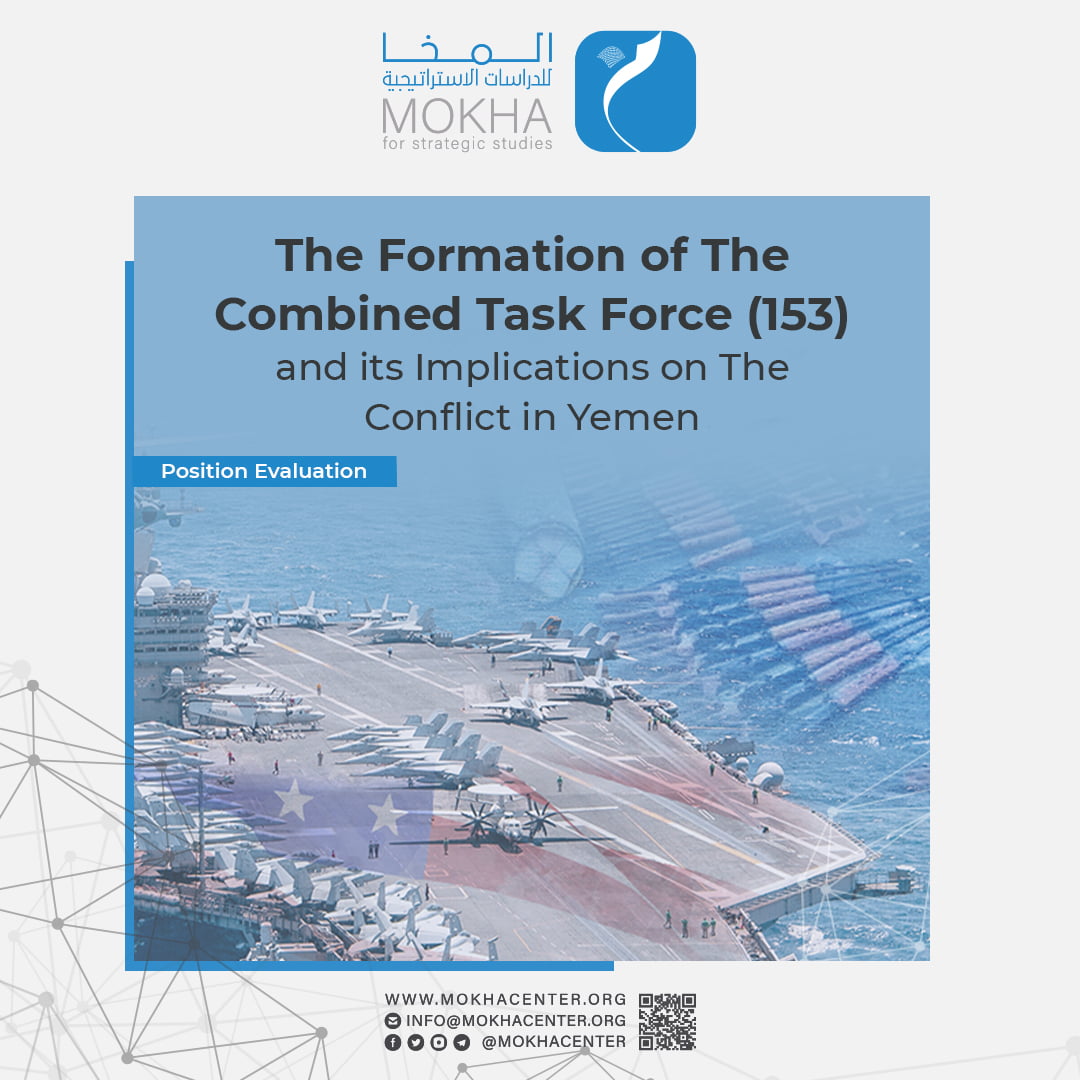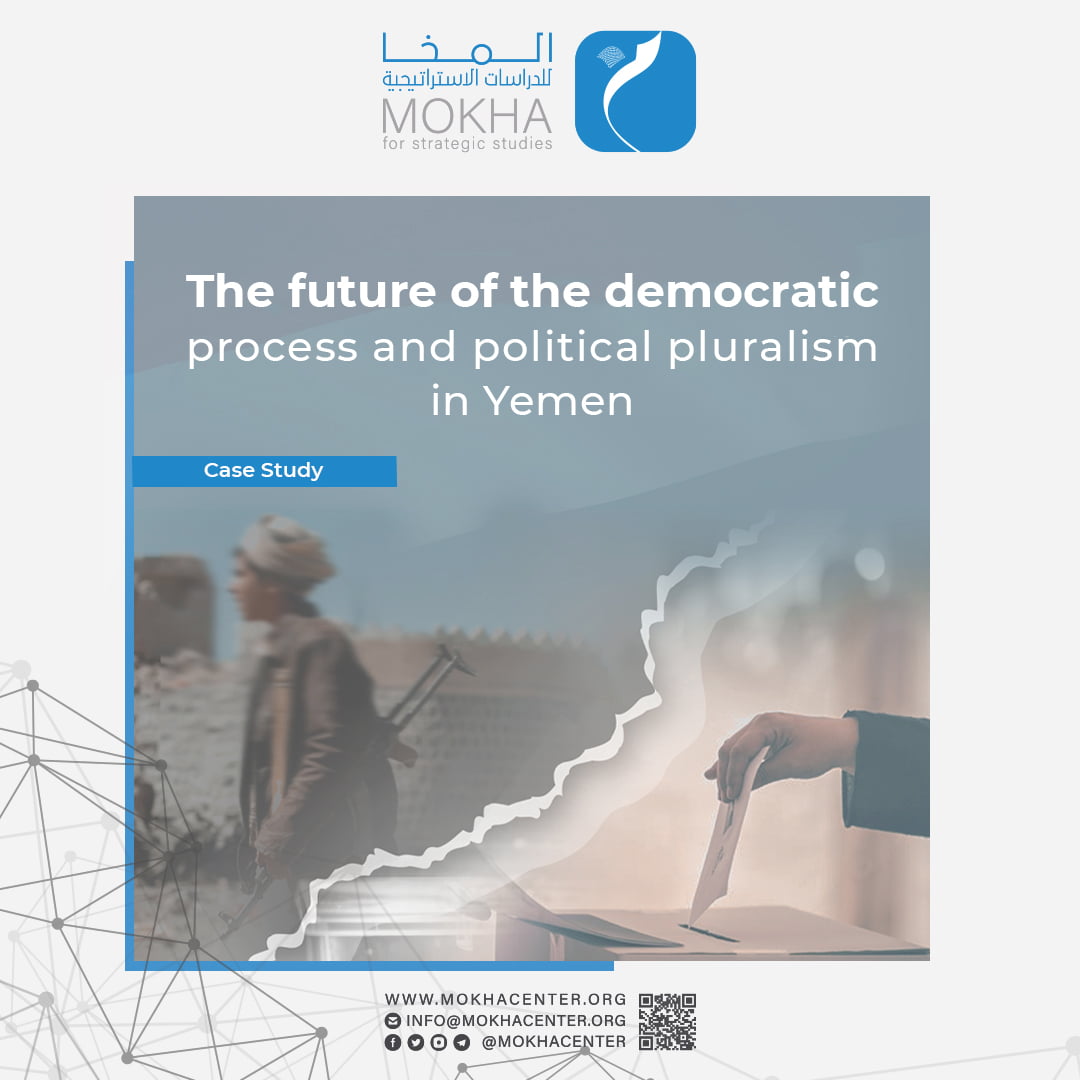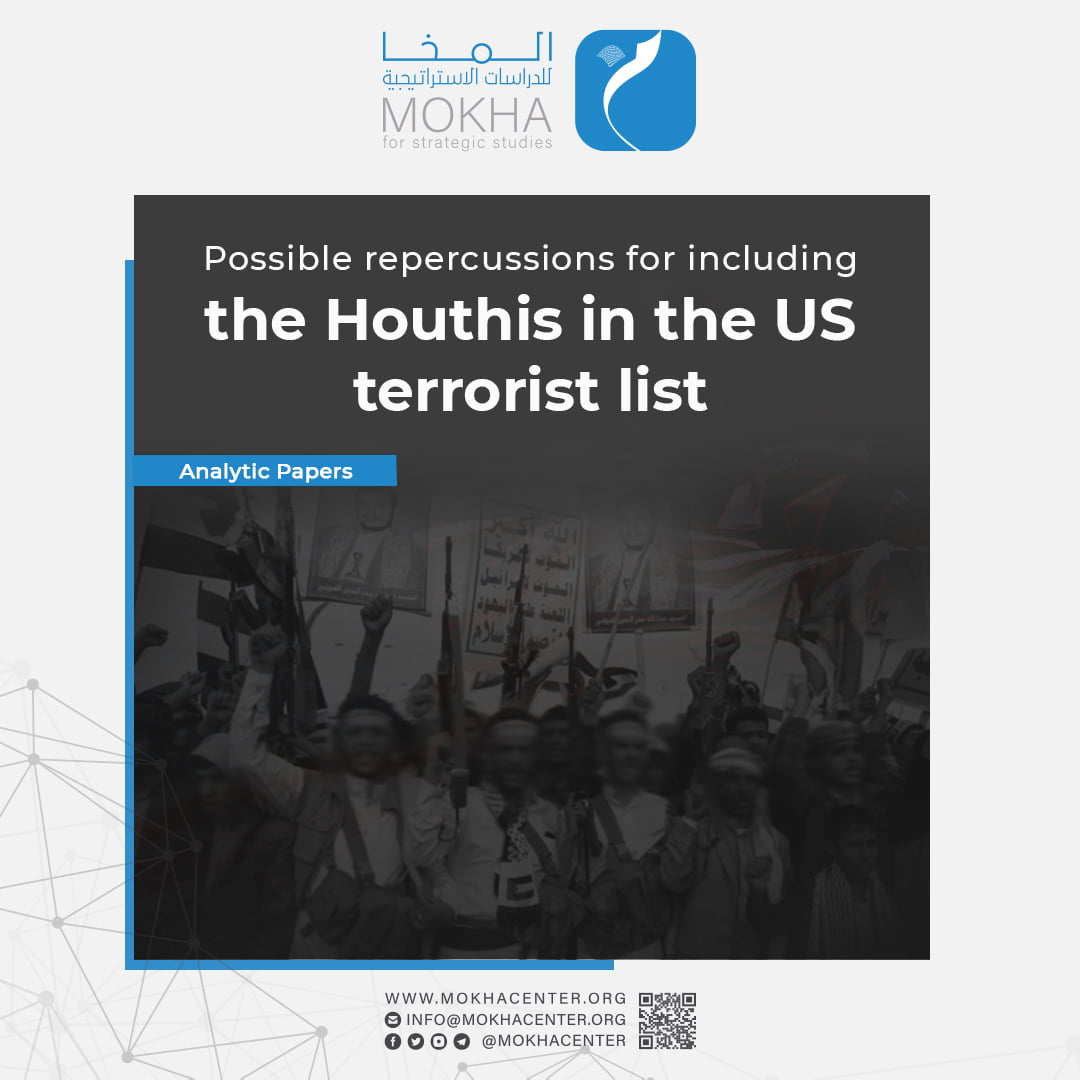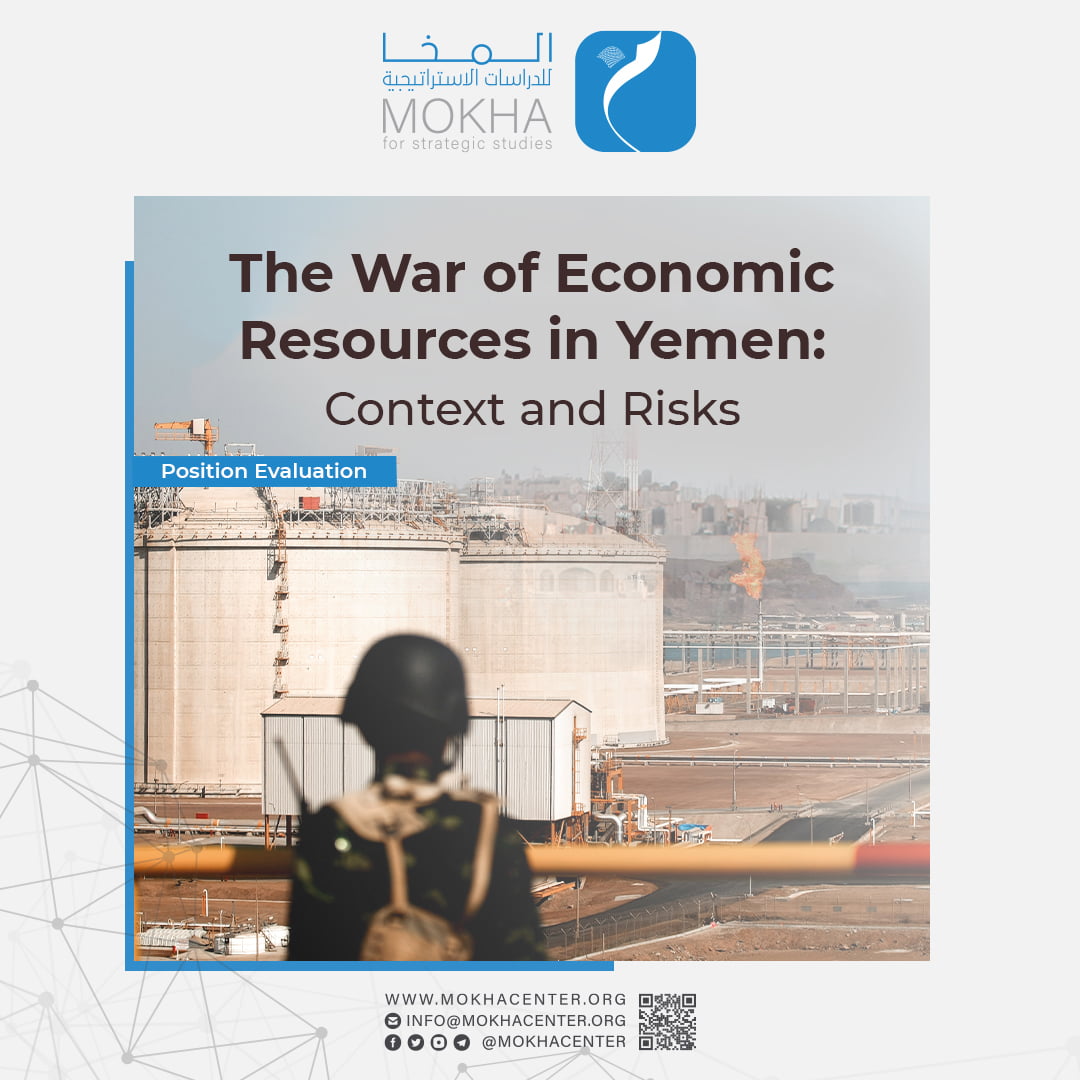The Protests in Aden and Mukalla… Motives and Outcomes
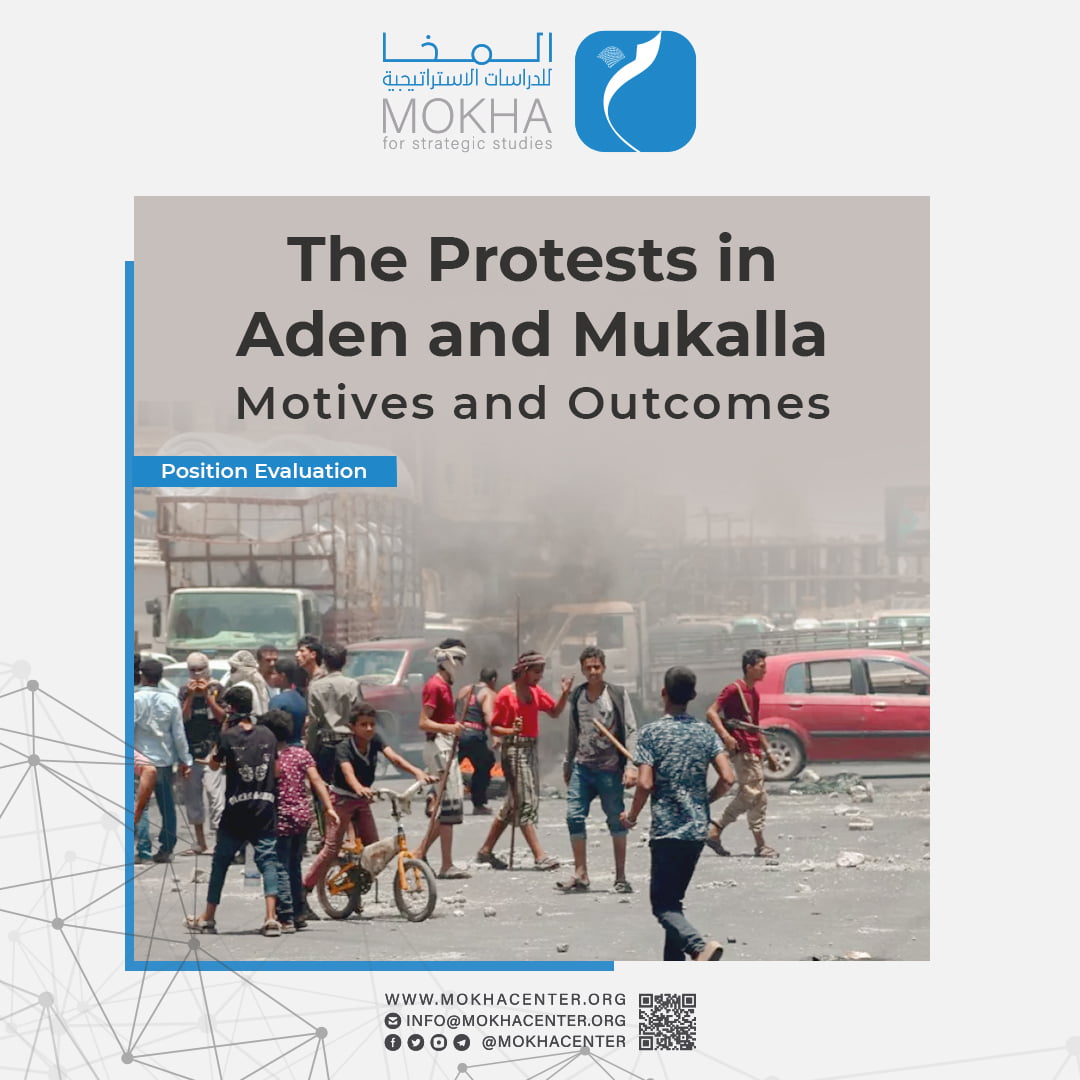
| Getting your Trinity Audio player ready... |
Mocha Center for Strategic Studies
On September 10, the city of Aden witnessed the launch of the first spark of a youth protest movement, which soon turned into a widespread, popular uprising and demonstrations. Youth roamed the city’s neighborhoods and streets, expressing the state of congestion and rejection of the deteriorating service conditions and standard of living in it.
The protest movement continued for days, and slogans were raised demanding the expulsion of the STC, its exit from Aden and the cessation of the state of chaos, despite the fact that the STC confronted the demonstrators and protesters with military vehicles, security pursuits, arrest campaigns and shooting bullets in the air toward the demonstrators, which resulted in deaths and injuries.
The city of Mukalla in Hadhramaut governorate witnessed large demonstrations, protesting against the deterioration of the currency and services in the governorate, and shops were closed to condemn the deterioration of electricity services. The protesters blocked the main and subsidiary streets and chanted slogans, calling for the departure of the governor for his inability to solve the electricity problem that the residents have been suffering from for years.
Sources told the al-Jazeera TV network that one person was killed and four others were wounded by security forces’ bullets in Mukalla. Also, in the city of Tarim in the governorate, the army dispersed protesters, who tried to block an international road linking Yemen with the Sultanate of Oman, denouncing the deteriorating living conditions. Other demonstrations also took place in the city of Shihr in Hadhramaut.
The protesters blamed the three main parties: the Arab Coalition, the internationally recognoised government and the STC for the deterioration of the situation. However, the STC appeared the most in the protesters’ petition of accusation, as it is actually in control of the city of Aden and the surrounding areas, and it alone is in control of its financial resources and the party responsible for the departure of the internationally recognised government.
Reasons for protests:
These protests were preceded by several incidents in Aden:
On July 31, gunmen affiliated with a leader of the STC kidnapped a young man, Fahd Al-Riyashi, from Aden International Airport when coming from Europe to visit his relatives in Yemen. He was hidden for a whole month without revealing his whereabouts or informing his family.
On September 10, four students returning from Malaysia to the homeland through Aden International Airport were detained and forcibly disappeared in Badr Camp in Aden, which is controlled by the STC forces, without revealing the reasons or circumstances of the detention.
On September 13, a security point belonging to the 9th Strike Force Brigade, one of the STC Brigades, kidnapped, detained, and killed a young man, Abdul-Malek al-Sanabani, who was returning from the United States of America, in Lahj governorate, while passing through the security point from Aden airport on his way to Sana’a. The incident turned into a public opinion issue after his body appeared in a hospital in Aden showing signs of torture.
All these incidents, after the reaction on social media platforms, formed the spark for the popular protests that took place in the city of Aden for several days. However, as there are several other reasons and motives that led to it being a popular momentum to participate in, including:
- The deterioration of the city’s infrastructure and the collapse of public services: electricity, water, sewage, hygiene, health, etc.
- Disruption of the work of the various ministries and official institutions, including: the judiciary, courts and prosecutions.
- High prices, the high cost of living, and the fall in the value of the local currency against foreign currencies with the interruption of salaries for more than 10 months, in addition to the halting of investments, businesses and projects as a result of the security situation and the current chaos, which led to the absence of job and employment opportunities and increased unemployment and poverty rates.
- The state of political obstruction and the ongoing tensions in the public scene, the Transitional Council’s forces’ violations of the rights of civilians, and the performance of government institutions with the absence of the internationally recognised government from attending as a result of the failure to implement the Riyadh Agreement, which was made between the internationally recognised government and Transitional Council, on November 5, 2019.
- Six years have passed since the liberation of the city of Aden without any achievements that touch the needs of the citizens while the society has lived through various crises, which led to the deterioration of people’s living conditions, especially after the STC took control of the administration of Aden in spite of all the promises it made to improve the city’s conditions and address its crises.
All those factors, combined, exacerbated the state of popular tension, and led to the growth of social discontent in the city of Aden.
Similarly, the city of Mukalla, and other cities in the Hadhramaut governorate, witnessed a similar protest movement motivated by the same reasons.
Protesters’ Demands:
Protesters, from all age groups and social strata, came out on the streets of the city of Aden, and they expressed several demands, including:
- Improving infrastructure, providing basic services and stopping the deterioration of the living situation.
- Their rejection of the absence of state institutions despite the Riyadh Agreement confirming the return of the internationally recognised government to the city of Aden to carry out its duties.
- Ceasing the illegal practices and violations committed by the armed groups affiliated with the UAE-backed Transitional Council.
Reactions:
The internationally recognised government:
Nearly a week after the protests that swept the streets of Aden and Mukalla, the internationally recognised government has not issued any noticeable position, except tweets by some of those affiliated with the internationally recognised government, which demanded the need to work to improve living and economic conditions and the implementation of the security and military part of the Riyadh Agreement, which is to enable the internationally recognised government to return and carry out its work and tasks safely from the interim capital (Aden). However, it has become a demand, according to a statement from the Quartet Committee, to return to Aden, and to improve the economic file. While the government does not seem willing to repeat the experience of the first three months of this year, when it returned and started working from Aden, it remained at the mercy of the SCT forces, which are in sole control of the city.
On September 14, the Yemeni Prime Minister, Maeen Abdul-Malek, called on the UAE government to support the completion of the implementation of the Riyadh Agreement, to help stop the deterioration of the Yemeni economy, and to support enabling the government to perform its work from the interim capital (Aden).
The Southern Transitional Council
The STC pre-empted the protests by blaming the government for — from its point of view — refusing to return to Aden to carry out its duties and work. With the start of the protests, the Transitional Council, through a number of its leaders, tried to calm and contain the rising anger by meeting and talking to the protesters and asking them to stop the escalation, but the protests continued and escalated. Being unable to stop the protests peacefully, the STC began using security solutions by sending armed forces to suppress the protesters by force, in addition to arresting them and chasing them.
Along with the security solutions, the STC’s media launched a propaganda campaign to distort the image of the protesters, confuse their demands and describe them as mercenaries, intruders and servants of forces and a hostile agenda, as well as describing them as “Houthi infiltrators in Aden”!
The STC also prompted its activists and media outlets to warn against participating in the protests as acts that threaten security and stability. These activists and media outlets also promoted security victories that included the arrest of sabotage cells and armed men who were present among the demonstrators, plus attacks on security soldiers by intruders with allegations of saboteurs and aggressors belonging to the northern governorates and political forces hostile to the south, as well as other propaganda circulated by the STC Media.
On September 15th 2021, in a speech, Aidarous Al-Zubaidi, head of the STC, announced a state of emergency in the southern governorates and called on his forces to “strike with an iron fist anyone who would dare to destabilize security and stability in Aden,” as he put it. He also called for zero tolerance with those he called “infiltrated elements” in the protests and warned against directing protests for non-national goals and political calculations or inciting public disorder and vandalism, as he said. Al-Zubaidi’s appearance, while giving his brief speech, wearing a military uniform, as well as not giving any promise to improve or come up with appropriate solutions to the situation, confirms that “violence” is the solution proposed to quell the protest movement.
The local authority in Hadhramaut:
In Mukalla, Hadhramaut, the governor, Faraj al-Bahsani, has the Elite Forces, and he leads the forces of the Second Military Region at the same time. He also enjoys a balanced relationship with Saudi Arabia, the UAE, the internationally recognised government and the STC, which made him more reassuring and less severe in the face of the protest movement, until then. the local authorities expressed their sympathy to and support for the protesters expressing their suffering and demanding the needed solutions.
The Arab Coalition:
Some observers think that what is happening in Aden is nothing but a hidden conflict between Riyadh, on the one hand, and Abu Dhabi on the other, and this explains the talk of some Saudi media professionals about the STC’s Negative role and its obstruction of the implementation of the Riyadh Agreement, as well as blaming it for the consequences of the current events in Aden. On the other hand, the Emirati media blames the internationally recognised government for the deteriorating economic and living conditions in Aden and the southern governorates, while it has neglected or underestimated the recent protest movement.
This contradictory position between the coalition leadership’s two parties is what prompted the “Quartet Committee” to appear, in the meantime, to be in charge. The ambassadors of the Quartet countries (Saudi Arabia, the Emirates, the United States and Britain) issued a statement on September 16 calling on the internationally recognised government to return to Aden and to quickly take all necessary steps to start achieving economic stability in Yemen, while emphasizing the commitment of the Quartet countries to provide them with support. The statement stressed the importance of speedy implementation of the Riyadh Agreement.
The Activists
Yemeni activists from the southern governorates followed the Aden protests. They covered its news and transmitted its current events through social media platforms. They also launched the hashtag #عدن_تنتفض_ضد_الانتقالي (Aden rebels against the Transitional Council) to include all tweets and comments related to the event. The hashtag has trended and became the news.
Determinants of the scenarios:
- The continuation of the protests, the expansion of their presence, the high frequency of their demands, and their ability to confront machines of oppression and tools of killing.
- The position of the Transitional Council, its coherence and its performance in the face of these protests, whether in hollowing out the demands or in correcting the course of its performance and seriously addressing existing situations and crises.
- The internationally recognised government’s positive position on the protests and its ability to invest in obligating the STC to implement the Riyadh Agreement in full, including the security and military part, without delay.
- Saudi Arabia’s position on the internationally recognised government and popular protests, and its ability to gain public support in the south after the UAE took control of it.
- The international pressures exerted on the Yemeni parties, especially on the internationally recognized government, the latest of which is the demand for its return to Aden to face the economic situation, regardless of the implementation of the security and military aspect of the Riyadh Agreement.
Expected Outcomes:
In light of the ongoing protests in the southern governorates, especially Aden and Hadhramaut, and the varying reactions of the local authorities and security services, it is expected that matters will lead to one of the following outcomes:
First: Suppression of protests: using force to disperse demonstrators, chasing down protesters and terrorizing them through shootings, arrests, incursions, threats and fabricated accusations. This was manifested by mobilizing all of the Transitional Council’s military and security units, spreading them out in the streets and neighborhoods and violently confronting any manifestation of protest. The STC views the protests as a matter of existence or non-existence; if this protest expands and its flame increases, the STC will be the first to be burned by its fire.
If the force succeeds in suppressing the protest movement, which is the likely outcome, the STC will have achieved — in the short term — what it considers to be a decisive victory in a fateful battle and will strengthen its control on the ground and will work to prosecute dissenting voices and opinions. However, the STC will have been exposed in front of the Adeni public after it pointed its weapon at the chests of the defenseless protesters, spilled their blood and caused the dead and wounded in various areas of Aden while it was the one claiming that its weapon is used only in defending Aden and the southern governorates against any external enemy.
Second: The expansion of the protests: the situation becoming out of control, the outbreak of a state of chaos and the retreat of the forces of the STC and its components, which may dictate an open confrontation. This depends on the continuation of the protest movement, its escalation of pace, its ability to confront and enduring means of repression, tools of killing and arrest and security pursuits. In this case, the STC will seek to gain external support while tightening control over some areas in its hands and entering into armed confrontations against groups and units that may emerge later from within a state of chaos and lawlessness.
It seems that this outcome is excluded at the moment for several objective and circumstantial reasons.
Third: Generating public and governmental pressure: This is due to the protests of the Arab Coalition, led by the Kingdom of Saudi Arabia, to work seriously and firmly to implement the Riyadh Agreement, and the solutions and arrangements it contains, the most important of which are: the return of the government, the expulsion of the military camps from Aden, the handing over of medium and heavy weapons used by the illegal militias, the inclusion of all armed units and formations under the supervision of the Ministries of Defense and Interior, and the initiation of economic arrangements that would develop solutions and remedies for the people’s living situations.
As for the Hadramaut governorate, repression seems unlikely, at least on the same level as the protests in Aden, which makes it likely that the situation there will lead to containing the protest movement while meeting the possible limit of its demands or agreeing with the local authorities to form a joint pressure mechanism on the government and the Arab Coalition to support the local authority and the relevant service institutions in working to alleviate suffering and improving the status of services.
Recommendations:
By reading the possible impact of the previous determinants on the popular protests in Aden and Mukalla and considering the expected outcomes, the following recommendations can be made:
- The continuation of the popular protests on the field, the media momentum and the human rights organizations’ oversight of the repercussions to put political pressure on all parties to get the southern population out of the no state and no separation stigma. The return of the internationally recognised government to exercise its duties and responsibilities from its presence in the field and the full implementation of the Riyadh Agreement to stop the government’s excuses for its absence.
- The need for the Yemeni government to demand the Arab Coalition to compel the STC to implement the military and security aspects of the Riyadh Agreement before returning to Aden because this necessarily means that the government will fall — in light of its weakness and the strength of the STC — under the guillotine of threats and pressures.
- The Yemeni national political forces should move parallel to the public in the south in order to give greater impetus to these protests and benefit from them to extricate the Yemeni reality from the domination of the armed militia and rebel forces on the authority and the functional projects of foreign agendas.
In Conclusion:
The protests may constitute a valuable opportunity for the concerned parties — the Arab Coalition, the internationally recognised government and the STC — if they reconsider their performance and management of the interim capital (Aden) and the rest of the liberated areas, especially with regard to basic services and living conditions. As the economic situation seems to be at its worst, all parties must give it the highest priority to put an end to the suffering that is getting worse, as society can no longer bear more of it.
Nevertheless, if these parties neglect these protests, they will have missed the opportunity, and they will have to bear the consequences of the continuous deterioration, the continuous collapse and the protests that may take other forms and appear closer to rebellion than to seeking solutions and remedies for disorders made by the three parties and as a result of their struggle and narrow calculations
.
